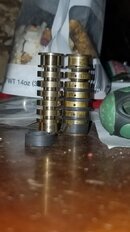I don't drink tap water either LOL but I have been known to drink the water condensate drain contents from the SA-6 separator towers. Got it tested once turns out it was just pure distilled water.An english man that doesn't drink.....
I therefore suggested that you could pour it down the drains and got into a lot of trouble with the Health and Safety folk Go figure
Upshot was no consideration was given to the advantages of an oil less oil free breathing air compressor and that our request that an oil free breathing air compressor does not require an oil analysis to comply with our breathing air standard BS EN 12021 was also rejected.
Further more as the oil testing part of the test is the greater of the total air testing cost we were lumbered with a test we don't need or require. The advantage you can claim is the filtration lasts 4 times longer.






